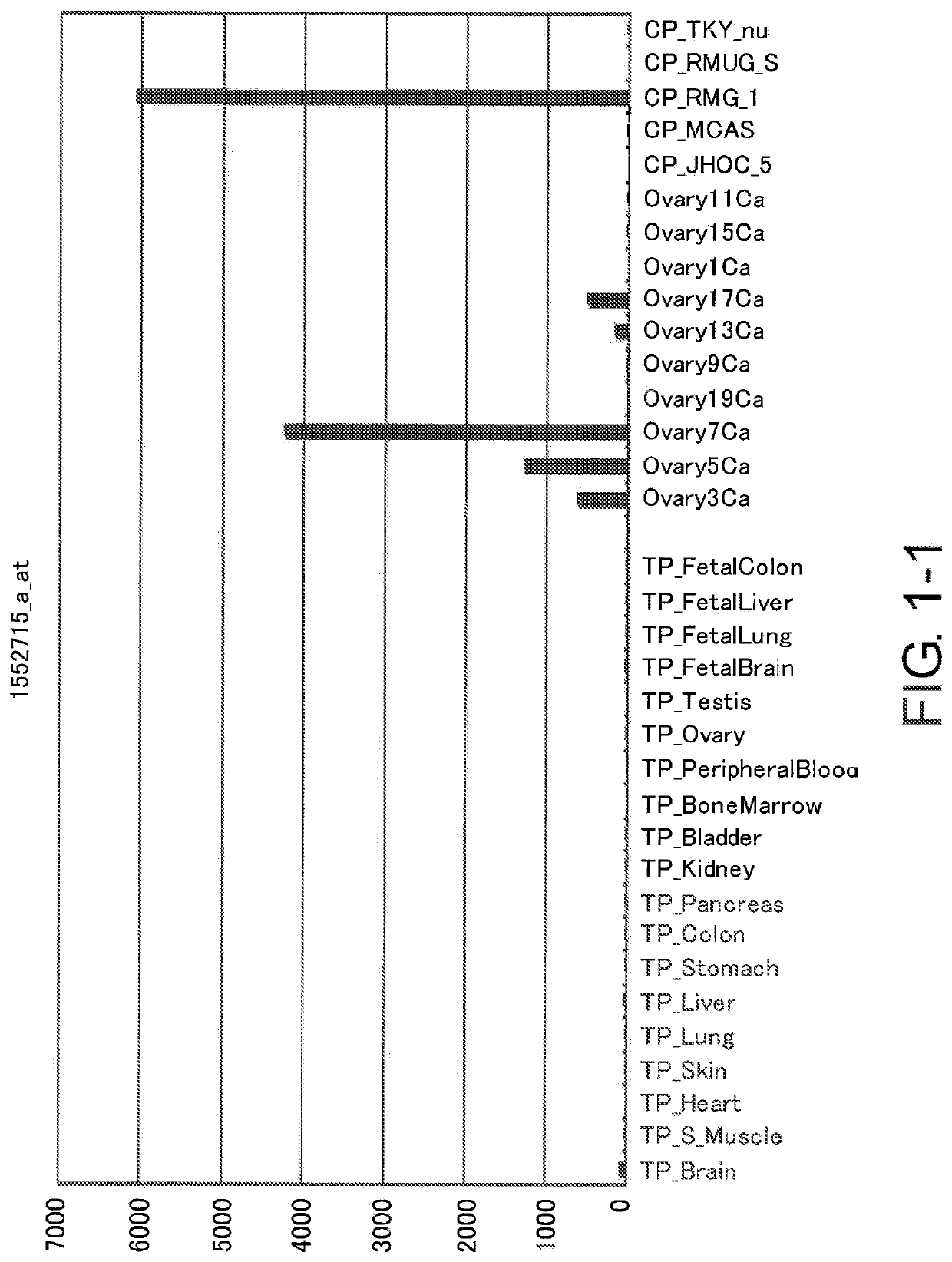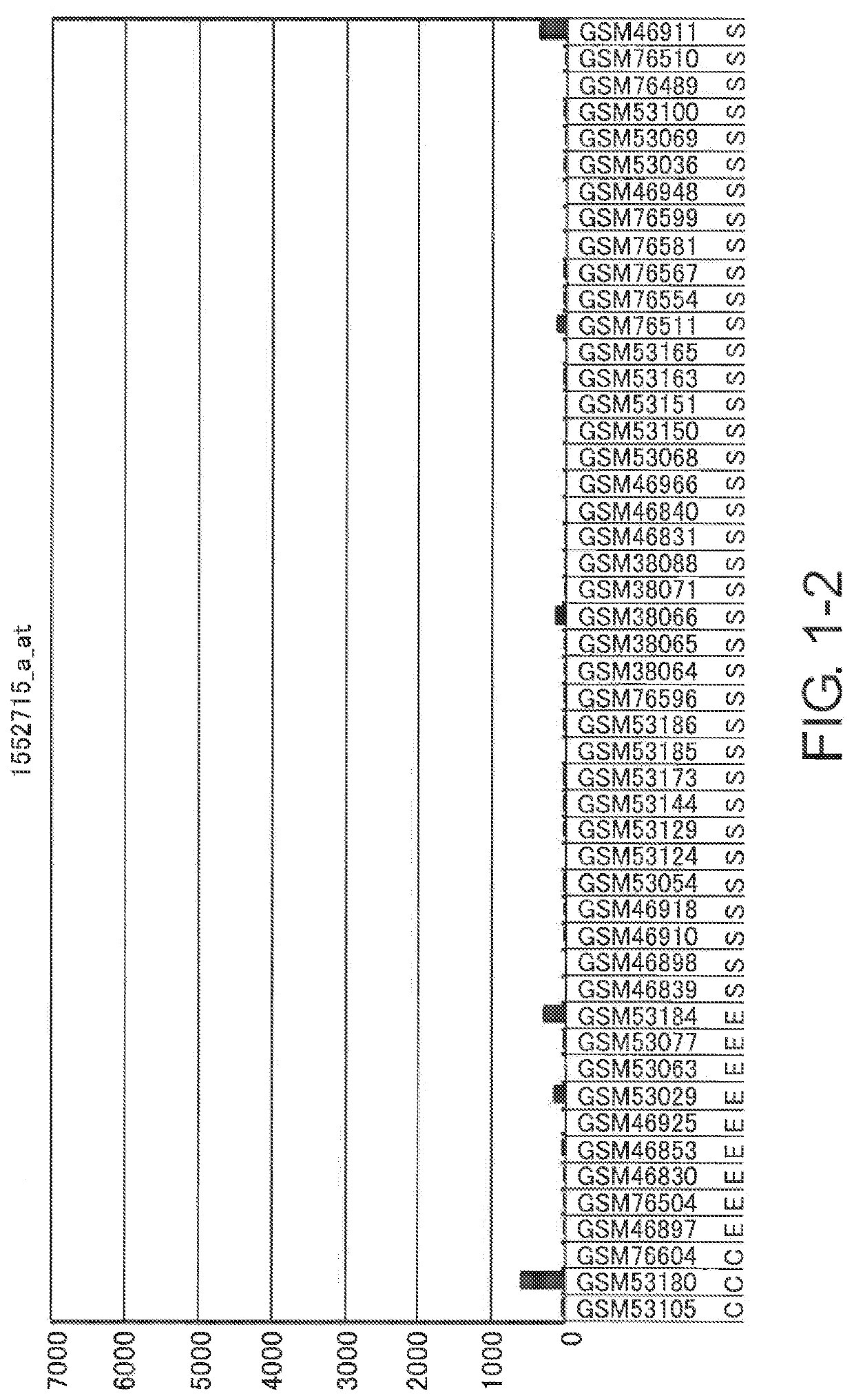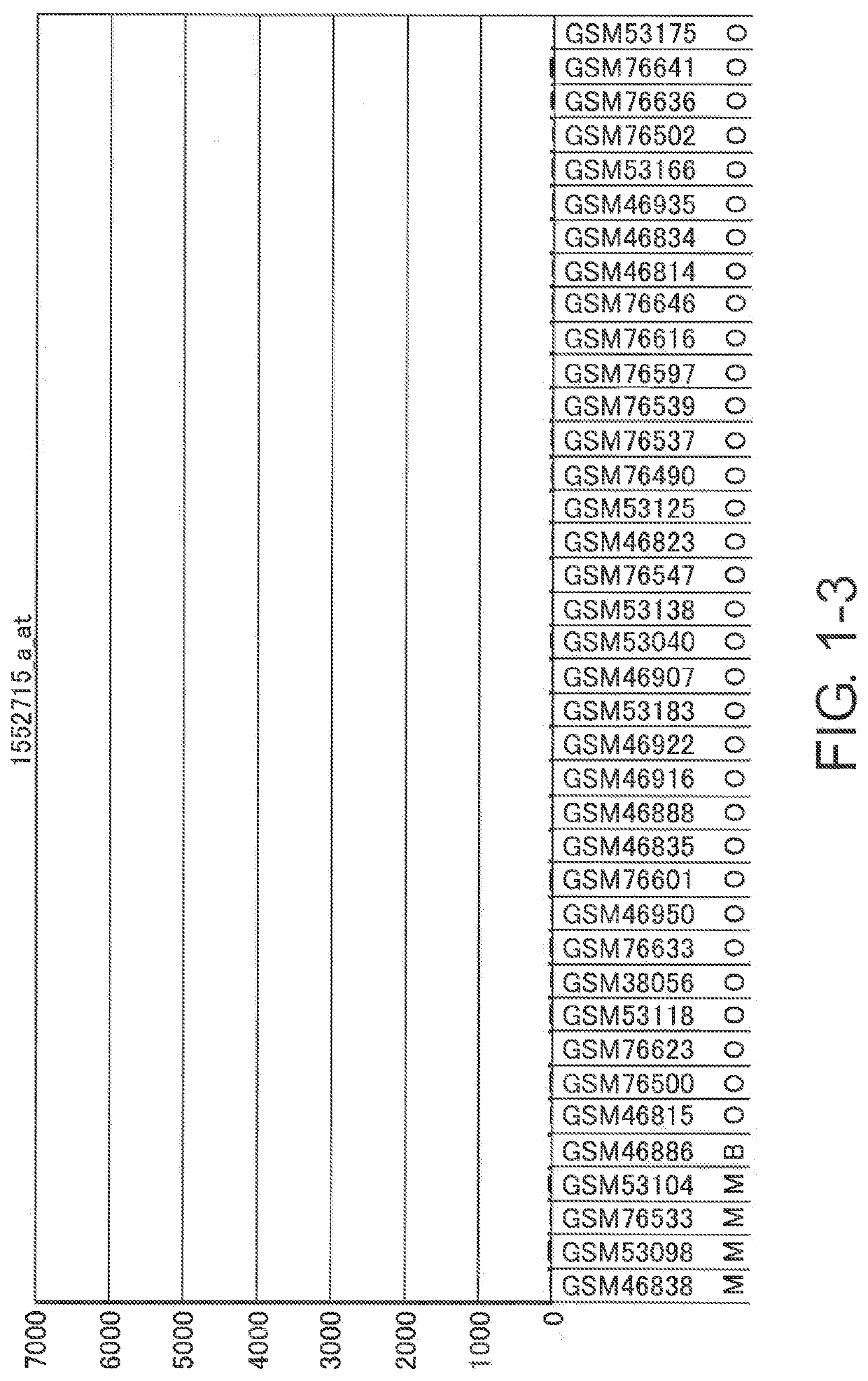Diagnosis and treatment of cancer using Anti-lgr7 antibody
a technology of anti-lgr7 and cancer, applied in the field of antibodies, can solve the problems of not reporting the association between lgr7 and cancer, and it is not known whether lgr7-expressing cancers can be treated using antibodies
- Summary
- Abstract
- Description
- Claims
- Application Information
AI Technical Summary
Problems solved by technology
Method used
Image
Examples
example 1
Expression Analysis of Human LGR7 mRNA by Affymetrix U133 Plus 2.0 Array
[0396]Total RNA was extracted from surgical specimens of ten ovarian cancer cases that were collected after obtaining written consents at the University of Tokyo Hospital (Japan), and stored by freezing. Herein, the surgical samples were embedded in an OCT compound, and this was sliced and dissolved in TRIZOL (Invitrogen), and then total RNA was extracted according to the method described in the manual attached to the product. At the same time, HE-stained specimens were prepared to confirm that a cancerous part is included. The tissue types of the ten ovarian cancer cases are as follows: clear cell carcinomas (four cases), serous adenocarcinoma (two cases), endometrioid adenocarcinoma (three cases), and carcinosarcoma (one case). Expression analysis was performed by Affymetrix U-133 Plus 2.0 Array using these total RNAs, and genes showing high expression specifically in ovarian clear cell adenocarcinoma were sel...
example 2
Establishment of Cells Expressing Full-lenzb Human LGR7
[0399]Full-length human LGR7 cDNA was isolated by the PCR method using Human Uterus QUICK-CLONE cDNA (Clontech) based on NCBI Accession Nos. NP_067647 (SEQ ID NO: 1, amino acid sequence) and NM_021634 (SEQ ID NO: 2, nucleotide sequence). This was cloned into pGEM-T Easy (Promega), and an HA tag sequence was added to the N terminus. Then, this was cloned into the pMCN2i vector for expression in mammalian cells.
[0400]Gene introduction into the Chinese hamster ovary-derived DG44 cell line was carried out using the BioRad GenePulser to obtain the HA-LGR7-expressing cell line HA-LGR7 / DG#24. Introduction into Ba / F3 which is a mouse pro-B cell was performed to obtain the HA-LGR7-expressing cell line HA-LGR / BaF3#48. LGR7 expression was confirmed by Western blotting using the HA-7 antibody (Sigma) against the HA tag (FIG. 2).
[0401]In addition, a vector into which the LGR7 gene is inserted was constructed for DNA immunization. The express...
example 3 preparation
of Anti-LGR7 Monoclonal Antibodies by DNA Immunization
[0402]DNA immunization by gene introduction into mice was carried out using the GeneGun Particle method. The method was performed according to the manual by Bio-Rad. The bullets for DNA immunization were prepared by mixing 1-mm gold particles (Bio-Rad) and pMCN-LGR7 DNA, and coating the inside of a tube with the mixture. Gene introduction was carried out by shooting the bullets coated with pMCN-LGR7 DNA into the abdominal skin of six-week-old female MRL / lpr mice using a Helios Gene Gun (Bio-Rad) at a pressure of 200 to 300 psi. It is thought that the gene introduced into keratinocytes, Langerhans cells, and dermal dendritic cells in the skin expresses the LGR7 protein=and thus the cells become antigen-presenting cells (APC) and induce immunity (Methods 31, 232-242 (2003); Immunization with DNA through the skin). DNA immunization was carried out six times at one-week intervals. For the fmal immunization, 1×106 cells of the BaF3 ce...
PUM
| Property | Measurement | Unit |
|---|---|---|
| concentration | aaaaa | aaaaa |
| concentration | aaaaa | aaaaa |
| concentration | aaaaa | aaaaa |
Abstract
Description
Claims
Application Information
 Login to View More
Login to View More - R&D
- Intellectual Property
- Life Sciences
- Materials
- Tech Scout
- Unparalleled Data Quality
- Higher Quality Content
- 60% Fewer Hallucinations
Browse by: Latest US Patents, China's latest patents, Technical Efficacy Thesaurus, Application Domain, Technology Topic, Popular Technical Reports.
© 2025 PatSnap. All rights reserved.Legal|Privacy policy|Modern Slavery Act Transparency Statement|Sitemap|About US| Contact US: help@patsnap.com



